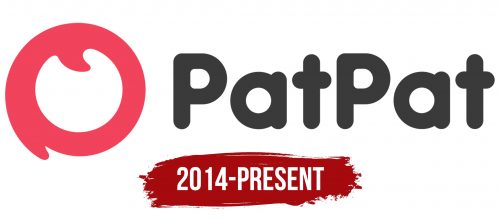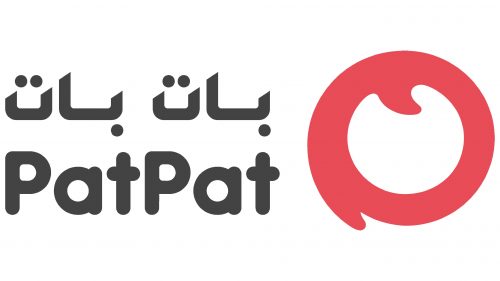The PatPat logo symbolizes friendliness, care, and family values, reflecting the brand’s desire to offer stylish and affordable clothing for the whole family. The emblem’s simple design creates a sense of warmth and trust, indicating that family shopping will be easy and joyful, with quality and fashionable products for both children and adults.
PatPat: Brand overview
The story of PatPat began in 2014 in Mountain View, California, when Albert Wang and Ken Gao, two entrepreneurs with backgrounds in technology, founded the company. The idea for the platform came from their experiences as new parents struggling to find affordable, high-quality children’s clothing.
Initially conceived as a direct-to-consumer marketplace for children’s apparel, the company was designed to eliminate middlemen and offer premium products at more affordable prices. The founders leveraged their tech expertise to develop a successful mobile app and web platform.
In its first year, the company focused on establishing a reliable supplier network in China and other Asian countries. The founders carefully selected manufacturers, prioritizing product quality and adherence to ethical production standards.
2015 was a pivotal year for the brand. After launching, their mobile app quickly gained popularity among young parents. The app offered a user-friendly interface for browsing and purchasing products and personalized recommendations based on user preferences.
In 2016, the company significantly expanded its product range. It began offering toys, maternity goods, children’s room décor, and kids’ clothing, making the platform a more comprehensive destination for young families.
The brand entered the global market in 2017, focusing on expanding across Europe. The company tailored its product offerings and marketing strategies to regional preferences, quickly gaining popularity, particularly in the UK and Germany.
2018, a substantial investment allowed the business to accelerate its growth and expand operations. A new logistics hub was opened in Europe, significantly reducing delivery times for European customers. A loyalty program was also introduced, offering exclusive discounts and benefits to frequent shoppers.
2019 was a year of technological advancements. The company implemented artificial intelligence to optimize inventory management and improve its recommendation system. A virtual sizing assistant was also launched, enhancing customer satisfaction and reducing returns.
Despite global challenges in 2020, the company continued to grow. It quickly adapted to changing market conditions by strengthening its digital presence and optimizing logistics. That year, the product line was expanded to include adult clothing catering to the entire family.
In 2021, the brand launched its clothing line, creating original designs that followed current children’s fashion trends. This move allowed the company to increase profitability by offering exclusive products unavailable on other platforms.
In 2022, the business expanded into the Australian and Latin American markets. By tailoring its product range and marketing strategies to the unique needs of these regions, the company quickly gained local customer loyalty.
By early 2023, the company had established itself as a leading global online retailer of family goods and children’s clothing. It continued to invest in enhancing its mobile app, improving user experience, and expanding its product offerings. Special attention was given to developing in-house brands and collaborating with well-known designers and celebrities.
Throughout its journey, the company faced challenges such as intense competition in the e-commerce sector and the need to continuously adapt to changing consumer preferences. However, by focusing on high-quality products at affordable prices and leveraging cutting-edge technology, the company overcame these challenges and rose to the top of its industry.
The story exemplifies how a startup that addresses a specific customer need can grow into a global enterprise. The business has evolved from a small website selling kids’ clothing into a worldwide online store offering a vast selection of products for the entire family, consistently adapting to meet the needs of its global customer base.
Meaning and History
What is PatPat?
PatPat is a digital marketplace for children’s apparel and accessories. The company was founded in 2014 by engineers Albert Wang and Ken Gao, who sought to develop a more efficient way to shop for children’s clothing. The company’s main goal is to simplify the process and minimize costs for parents looking for high-quality, fashionable clothing for their children. Offering an extensive catalog of clothing from newborns to teens and more affordable prices than conventional retailers, PatPat is a great place for parents to find the perfect outfit for their children.
2014 – today
The logo of PatPat, an American online store for children’s clothing, is designed in a very soft and friendly style. It captures attention with its smooth lines, evident in both the graphic symbol and the fonts.
The brand name takes center stage and is presented in two levels: in Arabic and English. This approach emphasizes the brand’s focus on a multilingual and culturally diverse audience. In the English version of the emblem, all the letters have rounded ends at the top and bottom, creating a feeling of softness and warmth.
Next to the name is a circular symbol—a red ring with two curves. One curve is directed inward and the other outward, adding uniqueness to the visual mark and making it recognizable. The red color of the ring stands out against the black letters, giving the logo expressiveness and dynamism.
The design’s softness and roundness symbolize care and comfort, which are important for a brand specializing in children’s products.





